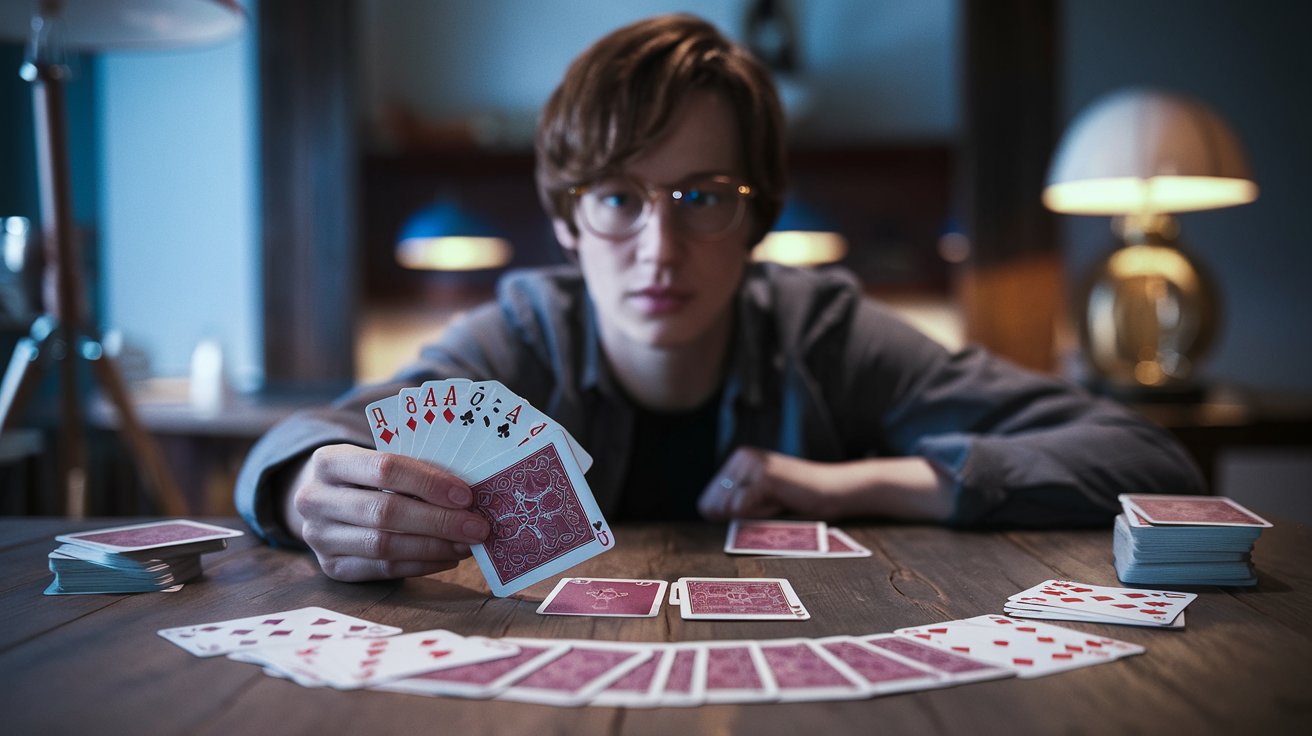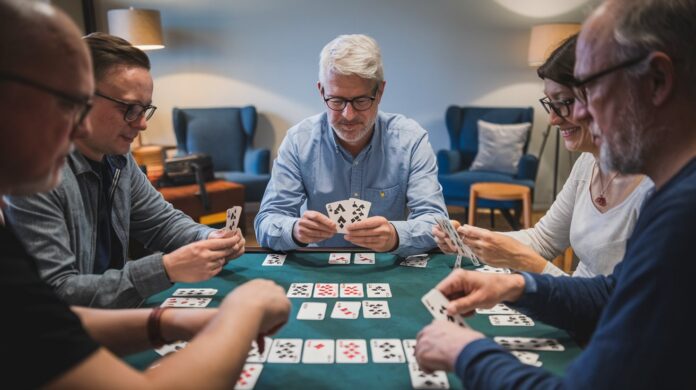Rummy isn’t just a game of luck—it’s a sophisticated battle of strategy, psychology, and skillful card management. While beginners focus on basic melding and discarding, true Rummy masters know that outsmarting opponents requires deeper tactical thinking. Whether you’re playing classic Gin Rummy, Indian Rummy, or one of the many regional variations, elevating your game can transform you from an occasional winner to a formidable opponent that others dread facing across the table.
In this comprehensive guide, we’ll explore advanced techniques that go beyond the basics, revealing the psychological warfare, mathematical probabilities, and strategic maneuvers that separate casual players from Rummy champions. These strategies apply across most Rummy variants, though we’ll highlight specific applications where relevant.
Mastering Card Memory and Tracking
Developing a Card Memory System
One of the most powerful skills that separates advanced players from beginners is the ability to track cards throughout the game. While memorizing every single card is unnecessary (and practically impossible for most people), developing a system to track key cards will significantly improve your game.
Focus on tracking:
- High-value cards (face cards and tens)
- Cards your opponents pick from the discard pile
- Cards your opponents appear to be collecting based on their discard patterns
- The flow of sequential cards in suits you’re building
Rather than trying to remember everything, develop a mental framework that categorizes information. For example, mentally note “Player 2 is collecting diamonds” or “many high spades have been discarded.” This simplified tracking requires less mental bandwidth but provides actionable intelligence.
Pattern Recognition
Advanced players don’t just memorize individual cards; they recognize patterns of play. If an opponent consistently discards high cards, they may be working on a sequence-heavy strategy. If they regularly pick from the closed deck, they might be assembling a particular combination they don’t want you to identify.
Create a mental profile of each opponent based on their playing patterns:
- Are they risk-averse or aggressive?
- Do they hold cards longer or cycle through their hand quickly?
- Do they focus on sequences or sets?
- Do they discard high cards early or save them for strategic moments?
This profiling helps predict their future moves and informs your own strategy.
Strategic Discarding: The Art of Safe Plays

Calculating Deadwood Risk
Every card you keep increases your potential points if caught with an unfinished hand. Advanced players constantly evaluate the “risk-to-reward” ratio of holding cards:
- High-risk cards: Face cards and tens that aren’t part of a developing meld
- Medium-risk cards: Middle-value cards that could connect to potential sequences
- Low-risk cards: Cards that are already part of partial melds or have multiple meld possibilities
When deciding what to discard, calculate not just the point value but also the probability of completing melds with each card. A king worth 10 points might be worth holding if you already have a queen and jack of the same suit, while a 7 worth 7 points might be better to discard if it doesn’t connect to any potential sequence.
The “Bracketing” Technique
One advanced discarding strategy is called “bracketing”—intentionally discarding cards that sit on either side of sequences you believe your opponents are building. For example, if you suspect an opponent is building a heart sequence and you hold the 5 and 9 of hearts, discarding these cards is relatively safe while also limiting their options.
This technique works exceptionally well in games where players can only pick up the most recently discarded card, as it forces opponents to draw from the unknown stack instead.
Timing Your Discards
The timing of discards is crucial in advanced play:
- Early game: Discard high-value cards that don’t fit your developing strategy
- Mid-game: Once you’ve established your direction, discard cards that neither help your melds nor block opponents
- Late game: Make increasingly conservative discards, focusing on safety over speed
As the game progresses, the “safe discard” pool shrinks dramatically. What might have been safe early becomes dangerous late when players have more complete information about what others are collecting.
Reading Your Opponents

Analyzing Pickup Patterns
Pay close attention to which cards opponents take from the discard pile. These visible decisions reveal crucial information about their hand composition:
- If they pick up a 7 of clubs, they likely have the 6 and/or 8 of clubs, or perhaps other 7s
- If they ignore potentially useful cards (like a 7 when 6 and 8 have been discarded), they may be focusing on an entirely different strategy
When playing multiple games with the same opponents, note their tendencies across games. Some players habitually pursue certain combinations or have favorite suits they gravitate toward.
Body Language and Timing Tells
Physical and timing cues can reveal volumes about an opponent’s hand:
- Quick discards often indicate confidence in their strategy or a card they’ve been waiting to discard
- Hesitation before discarding suggests uncertainty or a difficult choice between keeping multiple valuable cards
- Reactions to your discards, even subtle ones, can tell you if you’ve just given them something they wanted
- The order in which they arrange cards in their hand might indicate developing melds (though expert players may deliberately mislead with this)
In online play, timing tells become even more important since physical cues are absent. Pay attention to unusual pauses or particularly quick plays.
Psychological Warfare
Advanced Rummy isn’t just played with cards—it’s played with minds. Consider these psychological tactics:
- False telegraphing: Appear to be collecting certain cards, then switch strategies
- Consistent timing: Take roughly the same amount of time for decisions regardless of their difficulty to avoid giving timing tells
- Discard confusion: Occasionally discard cards that seem valuable to create doubt about your strategy
- Confidence displays: Act confident when discarding cards near opponents’ likely sequences to make them doubt their strategy
Remember that these psychological elements work both ways—your opponents may employ similar tactics. Developing awareness of these dynamics adds a fascinating layer to advanced play.
Mathematical Approach to Rummy

Probability Calculations
Understanding the mathematical probabilities in Rummy gives you a significant edge:
- With 52 cards in a standard deck, the probability of drawing any specific card is 1/52 on the first draw
- After seeing 20 cards (your hand, visible discards, and your draws), the probability of drawing a specific unseen card becomes 1/32
- If you need one of 4 specific cards to complete a meld (say, any 8 to complete a set of 8s), your probability is 4/32 or 1/8
These calculations should inform your decision-making, especially in the mid-to-late game when more cards have been revealed. The formula for drawing a specific card is:
P(specific card) = (number of favorable cards remaining) / (total unseen cards remaining)
Expected Value of Plays
Beyond simple probability, advanced players calculate the expected value (EV) of different plays:
- If keeping a card gives you a 25% chance of completing a meld worth 25 points, its expected value is 6.25 points
- If discarding that same card carries a 10% risk of giving your opponent a meld worth 30 points, that’s an expected cost of 3 points
- The net expected value is therefore +3.25 points for keeping the card
This mathematical approach helps make optimal decisions in unclear situations. While you won’t have time to calculate precise numbers during play, developing an intuitive sense of these values improves decision-making.
Advanced Melding Strategies
Flexibility vs. Commitment
One key strategic decision is whether to commit to specific melds early or maintain flexibility:
Commitment Strategy:
- Focus resources on completing specific melds
- Discard unrelated cards quickly
- Benefits: Potential for faster completion
- Risks: Vulnerable to blocking, less adaptable
Flexibility Strategy:
- Maintain multiple potential meld options
- Keep cards that serve multiple purposes
- Benefits: More adaptable to changing game conditions
- Risks: Slower completion, higher potential deadwood
The optimal approach varies based on the specific Rummy variant, your initial deal, and opponents’ playing styles. In faster games with high-value penalties, flexibility often trumps commitment.
The “Set vs. Sequence” Decision
A fundamental strategic choice in many Rummy variants is whether to prioritize building sets (same value, different suits) or sequences (consecutive values in the same suit):
Sets Advantages:
- Harder for opponents to block (they need exact values)
- Can use jokers/wildcards more efficiently
- Often easier to build in multi-deck games
Sequences Advantages:
- More visual cues from the discard pile
- Generally more combinations possible
- Fewer cards needed for longer melding opportunities
Advanced players don’t commit exclusively to either strategy but adapt based on their initial hand and game conditions. Maintaining a balanced approach often yields the best results.
Pre-emptive Melding
In games where melding can occur before going out (like many contract Rummy variants), strategic melding becomes a powerful tactic:
- Meld early to reduce vulnerability if an opponent goes out
- Hold back melds to disguise your strategy
- Carefully time melds to influence opponents’ discarding behavior
The decision to meld early or late should consider both point protection and strategic deception. Showing melds reveals information about your strategy but protects those points if an opponent goes out unexpectedly.
Adapting to Different Rummy Variants
Gin Rummy Specific Strategies
In Gin Rummy, knocking and gin bonuses create additional strategic layers:
- The knock decision requires calculating when your deadwood value is low enough to risk ending the hand
- “Defense against knocking” involves keeping your deadwood low enough to minimize losses if an opponent knocks
- The “gin race” in the late game often focuses on quick deadwood reduction rather than building perfect melds
Indian Rummy Considerations
Indian Rummy (especially 13-Card Rummy) has distinct strategic elements:
- The requirement for at least two sequences, one without a joker, shapes early game strategy
- The value of jokers/wildcards is significantly higher than in many other variants
- The declaration process requires careful planning of your final meld arrangement
Canasta and Multi-Deck Strategies
In multi-deck games like Canasta:
- Card counting becomes even more valuable but also more challenging
- The “freeze” and special card mechanics add strategic complexity
- Long-term planning becomes more important than in single-deck variants
Tournament and Competitive Play
Managing Risk Based on Tournament Position
Tournament play introduces strategic considerations beyond single-game tactics:
- When leading: Adopt more conservative strategies to protect your advantage
- When trailing: Take calculated risks for potential big gains
- In the middle: Adapt your aggressiveness based on the specific point gaps
In tournament settings, the goal isn’t always to win each hand but to optimize your overall position. Sometimes accepting a small loss is better than risking a catastrophic one.
Time Management
In timed competitive play:
- Practice quick but accurate decision-making
- Develop a consistent rhythm of play
- Know when to spend extra time on critical decisions
- Be aware of opponents who may use time pressure as a strategy
The ability to maintain strategic clarity under time pressure separates top tournament players from the merely skilled.
Conclusion
Mastering advanced Rummy strategy is a journey that combines psychological insight, mathematical thinking, and strategic adaptability. While luck plays a role in any card game, these advanced techniques will consistently put you in positions to capitalize on good fortune and minimize the impact of bad draws.
The most important qualities for Rummy mastery are:
- Attentive observation of opponents’ patterns
- Disciplined card tracking
- Adaptable strategy based on changing game conditions
- Calm decision-making under pressure
- Continuous learning from both wins and losses
Practice these advanced techniques deliberately, focusing on one skill at a time until it becomes second nature. Record your games when possible to analyze decisions afterward, and consider joining online or local Rummy communities where strategy discussions can accelerate your improvement.
Remember that becoming a Rummy master isn’t about winning every hand—it’s about making the optimal decision in each situation based on the information available. With these advanced strategies in your arsenal, you’ll find yourself consistently outthinking and outplaying your opponents across the Rummy table.

Zareb Saleh is a journalist at Gulf Today and a ghostwriter for Gameoholic, specializing in gaming, technology, and digital culture. With a keen eye for industry trends, he delivers insightful stories that engage and inform readers.




